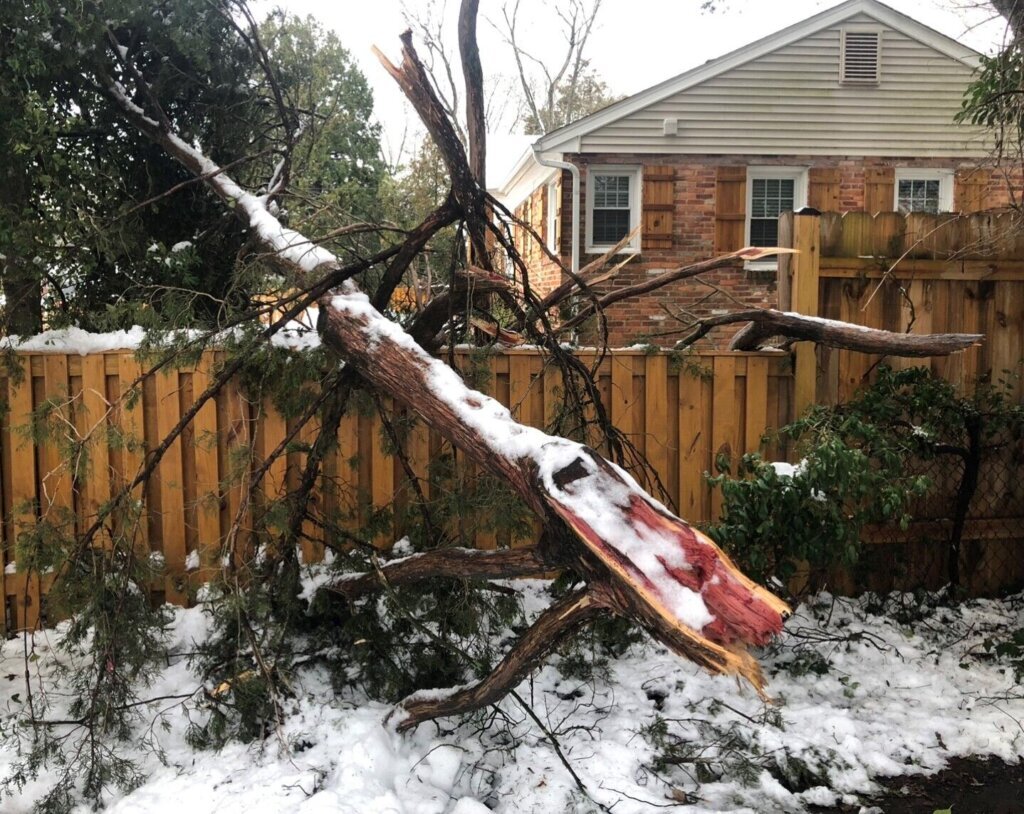
Several inches of snowfall with the consistency of mashed potatoes have damaged lots of trees. A D.C.-based consumers’ group with tips for hiring a tree service expects scammers will be coming out of the woodwork.
“They’re going to be coming to your door saying things like, ‘Oh, I’m doing work just right around the corner. And if you gave me a certain amount of money, a couple of hundred bucks, I can get started dealing with your problem,” Kevin Brasler, executive editor with Consumers’ Checkbook, warned.
“You definitely want to not use these companies. You don’t want to use companies that are going door-to-door; that’s not a proper way to solicit business,” he said.
Unlike Maryland, Virginia and D.C. do not require tree care services to be licensed. Brasler said anyone hired to work on your property anywhere should be able to show certificates of current policies for liability and workers’ compensation insurance.
“That protects you from a big risk. Tree care work is very dangerous,” he said.
Workers’ compensation covers the company’s employees.
“So, if someone’s injured on the job, you don’t have to pay for the medical bills, the company’s insurance policy does,” Brasler explained.
Liability insurance covers cost of damages if a branch is dropped on top of a car or a neighbor’s house. “Also, it covers damages to your own home; if a branch falls on your house, the company’s liability policy will come into play; you won’t have to go make a claim with your homeowners insurance company,” Brasler said.
Tips before hiring a company:
- As mentioned above, check that they’re insured.
- Pay nothing up front to ensure work is completed satisfactorily.
- Document exactly what you want done and what it will entail.
“Find out what’s included in the price. The main things that add cost to tree care work if they’re removing a tree is, ‘Are they going to haul away all the wood and debris?’ It’s a really good idea to have that included in your contract,” he said. The other expensive thing is whether the company will grind the stump below surface level, or just cut the trunk flush to the ground.
“Most homeowners want their stumps ground, so that it doesn’t exist anymore. And that’s more expensive,” Brasler noted.
If the tree work can wait, Brasler recommends comparison shopping.
“If the tree is damaged, but it’s likely not to pose a risk to your property or other properties or people around you, then try to wait until things die down a little bit and get multiple bids,” he said. “We find the price differences among local companies are huge. Some companies charge an additional $1,000 or more for the same tree removal job as nearby competitors.”
Take pictures of all damage.
“Document things and check with your insurance company before you start paying for repairs yourself,” Brasler said. “If there’s damage to your home or to your cars, or your neighbor’s homes from a tree that’s come down or limbs that have come down, document the damage, take pictures, make sure that you can document what happened.”
Making claims with homeowners or auto insurance companies that might already have businesses lined up to respond will help get things started more quickly.
After documenting damage, Brasler said it’s OK to take action to prevent additional damage by, for example, putting tarps up or getting trees off the home.
Through a special arrangement with the nonprofit Washington Consumers’ Checkbook, WTOP.com readers can have a look at ratings and price comparisons for tree service companies for a limited time.
Consumers’ Checkbook/Center for the Study of Services is an independent nonprofit consumer organization founded in 1974. It has for more than 40 years been an innovator in providing information to help consumers make smarter choices.








